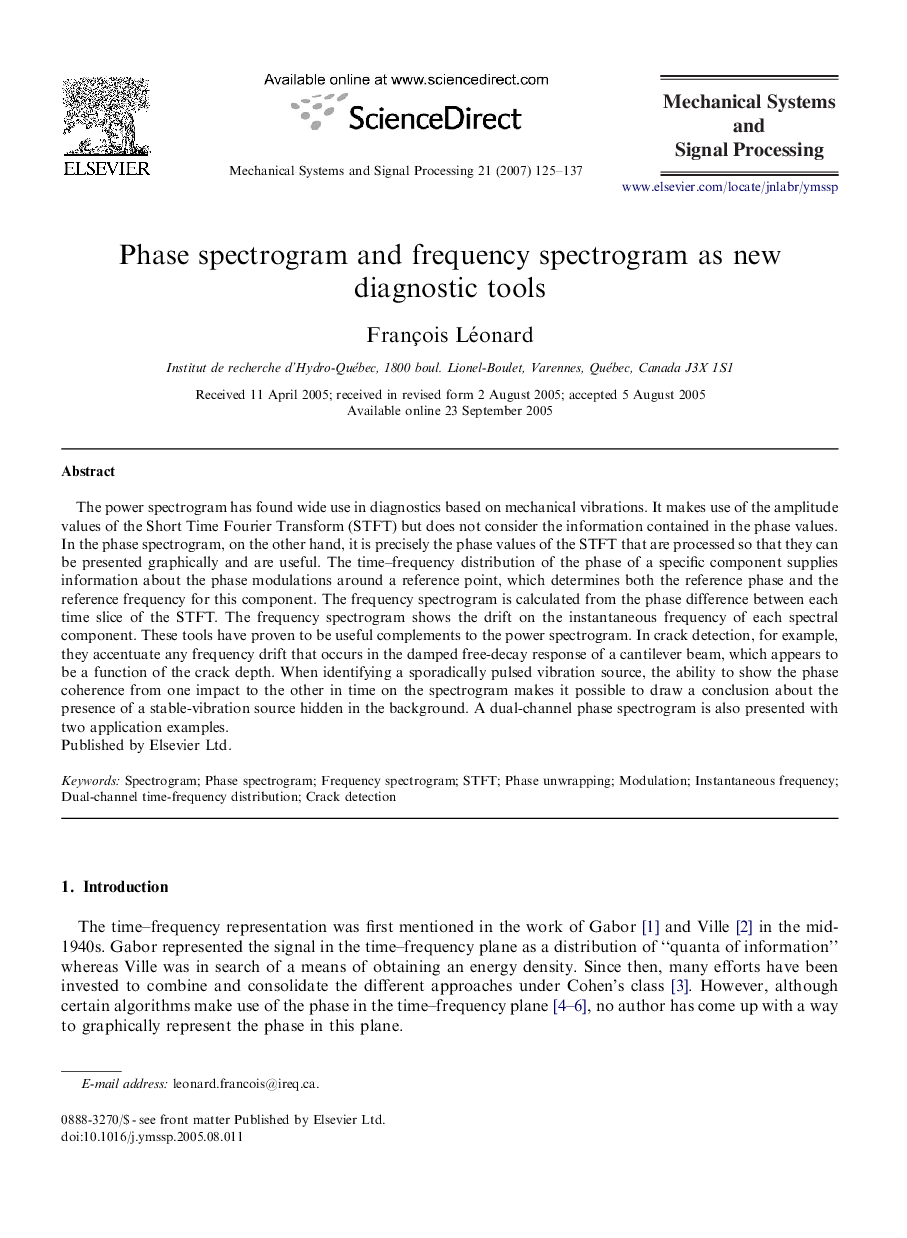| Article ID | Journal | Published Year | Pages | File Type |
|---|---|---|---|---|
| 560898 | Mechanical Systems and Signal Processing | 2007 | 13 Pages |
The power spectrogram has found wide use in diagnostics based on mechanical vibrations. It makes use of the amplitude values of the Short Time Fourier Transform (STFT) but does not consider the information contained in the phase values. In the phase spectrogram, on the other hand, it is precisely the phase values of the STFT that are processed so that they can be presented graphically and are useful. The time–frequency distribution of the phase of a specific component supplies information about the phase modulations around a reference point, which determines both the reference phase and the reference frequency for this component. The frequency spectrogram is calculated from the phase difference between each time slice of the STFT. The frequency spectrogram shows the drift on the instantaneous frequency of each spectral component. These tools have proven to be useful complements to the power spectrogram. In crack detection, for example, they accentuate any frequency drift that occurs in the damped free-decay response of a cantilever beam, which appears to be a function of the crack depth. When identifying a sporadically pulsed vibration source, the ability to show the phase coherence from one impact to the other in time on the spectrogram makes it possible to draw a conclusion about the presence of a stable-vibration source hidden in the background. A dual-channel phase spectrogram is also presented with two application examples.
